Many nations in North Africa and the Arabian Peninsula use common colors on their flags; white, red, black and green; like Egypt, Iraq, Syria, Libya, Kuwait, Jordan, Sudan, Yemen and the United Arab Emirates;
Muchas naciones del norte de áfrica y de la península arábiga usan colores en común en todas sus banderas; blanco, rojo, negro y verde; como Egipto, Irak, Siria, Libia, Kuwait, Jordania, Sudan, Yemen y los Emiratos Árabes Unidos;
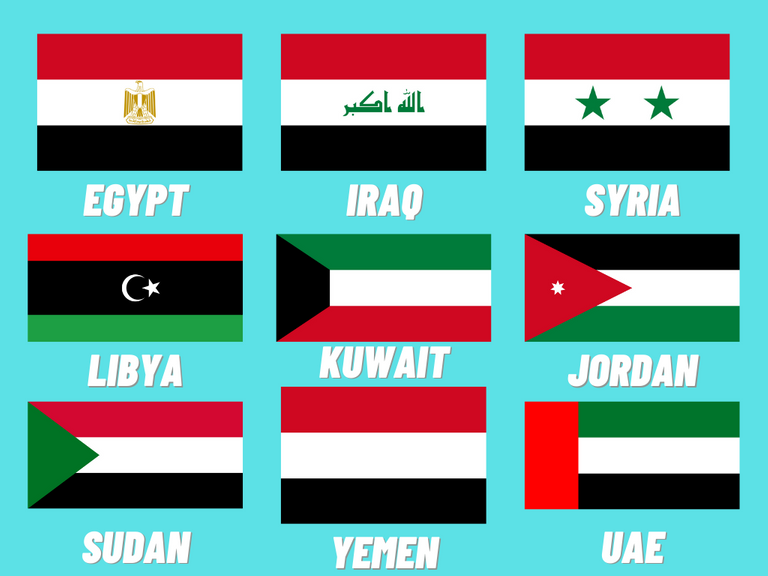
Some states with limited recognition such as Palestine, Somaliland, or the Sahrawi Arab Democratic Republic;
Algunos estados con reconocimiento limitado como Palestina, Somalilandia, o la República Árabe Saharaui Democrática;

Or some states that don't exist today like North and South Yemen, the Sultanate of Mahra, or Lower Yafa;
O algunos estados hoy en día inexistentes como Yemen del Norte y del Sur, el Sultanato de Mahra, o el de Baja Yafa;
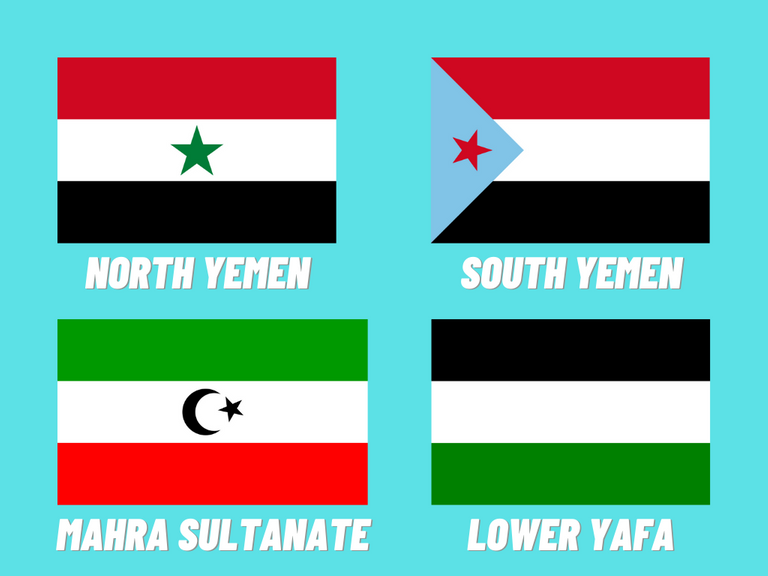
But ... Why these colors?!
Pero ... ¡¿Por qué estos colores?!
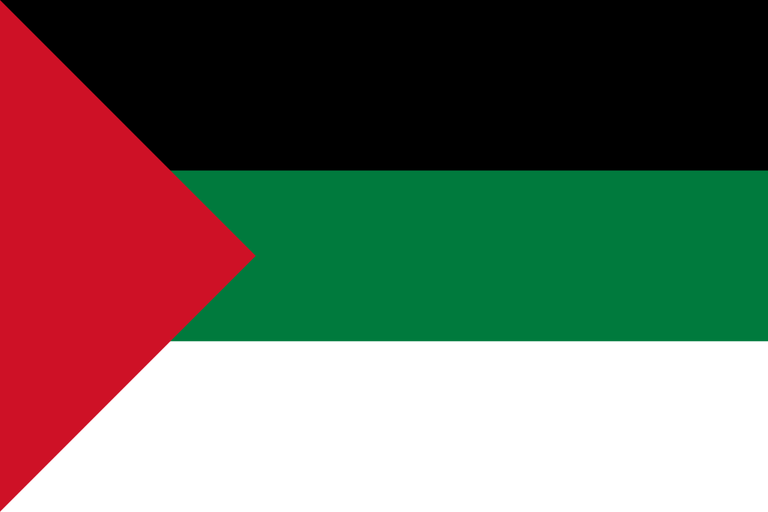
Flag of the Arab Revolt (Bandera de la Revuelta Árabe)
The colors and the use of a triangle on the left side come from the original flag of the Arab Revolt against the Ottoman Empire in the context of the First World War, an uprising started by the Sharif of Mecca with the intention of creating an Arab state from Syria to Yemen. Later, this colors would represent the unity of all the Arab people and would be known as the Pan-Arabic colors.
Los colores y el uso de un triángulo en el lado izquierdo vienen de la original bandera de la Revuelta Árabe contra el Imperio Otomano en contexto de la Primera Guerra Mundial, sublevación iniciada por el jerife de La Meca con la intención de crear un estado árabe de Siria hasta Yemen. Luego, estos colores pasarían a representar la unidad entre todos los pueblos árabes y serían conocidos como los colores panarábigos
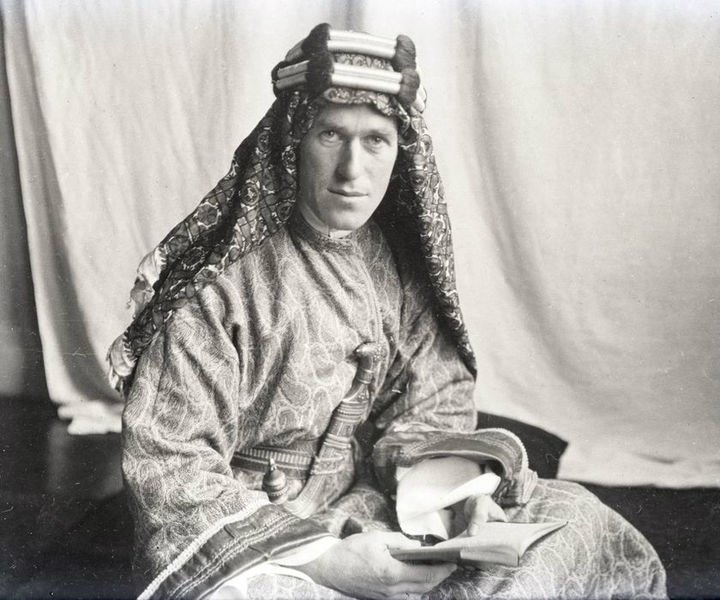
Lawrence of Arabia in Aqaba (1917) (Lawrence de Arabia en Áqaba (1917))
The Englishman Thomas Edward Lawrence, better known as Lawrence of Arabia, participated in this rebellion, who, posing as a faithful defender of the creation of an Arab state, would be fundamental for the subsequent division of the Middle East by the United Kingdom and France, with the secret Sykes-Picot agreements, and later with the officialization of these through the treaties of San Remo and Sèvres, which would divide the Ottoman Empire and define the borders of the French and English colonies that are still preserved today through the following independent states.
En dicha rebelión participó el inglés Thomas Edward Lawrence, mejor conocido como Lawrence de Arabia, quien haciéndose pasar por un fiel defensor de la creación de un estado árabe, sería fundamental para la posterior división del Medio Oriente por parte de Reino Unido y Francia, con los acuerdos secretos de Sykes-Picot, y posteriormente con la oficialización de estos a través de los tratados de San Remo y Sèvres, que dividirían el Imperio Otomano y definirían las fronteras de las colonias francesas e inglesas que aún hoy se conservan a través de los subsiguientes estados independientes.

Arab Army soldiers during the Arab Revolt holding the flag (Soldados del Ejército Árabe durante la Revuelta Árabe sosteniendo la bandera)
In turn, each of the four colors represents an Arab dynasty of descendants of the Prophet Muhammad, and are called "pan-Arab colors", since they are used to represent the political and ideological unity of all Arab peoples;
A su vez, cada uno de los cuatros colores representa por su parte a una dinastía árabe de descendientes del profeta Mahoma, y son llamados “colores pan-árabes”, ya que son usados para representar la unidad política e ideológica de todos los pueblos árabes;
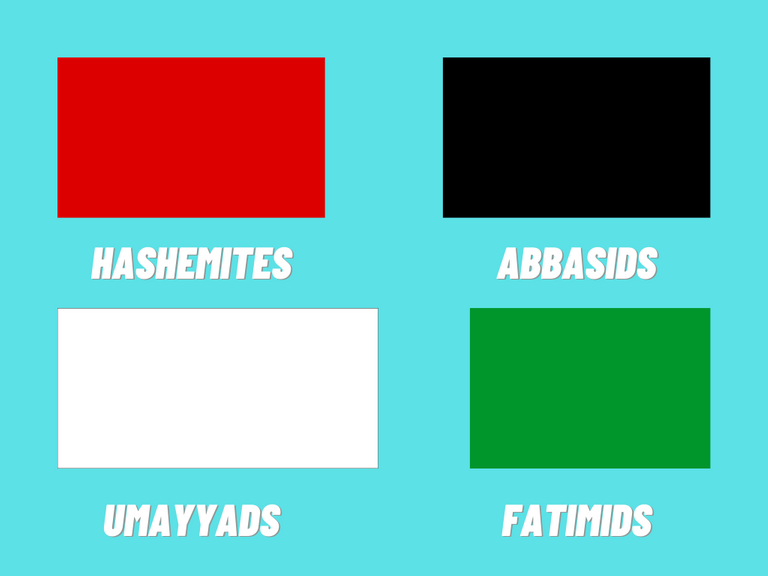
Red represents the Hashemites; black to the Abbasids; the target to the Umayyads; and green to the Fatimids. (El rojo representa a los Hachemitas; el negro a los Abasíes; el blanco a los Omeyas; y el verde a los Fatimíes)
As a bonus, some past flags of Iraq:
Como bonus, algunas banderas pasadas de Irak:
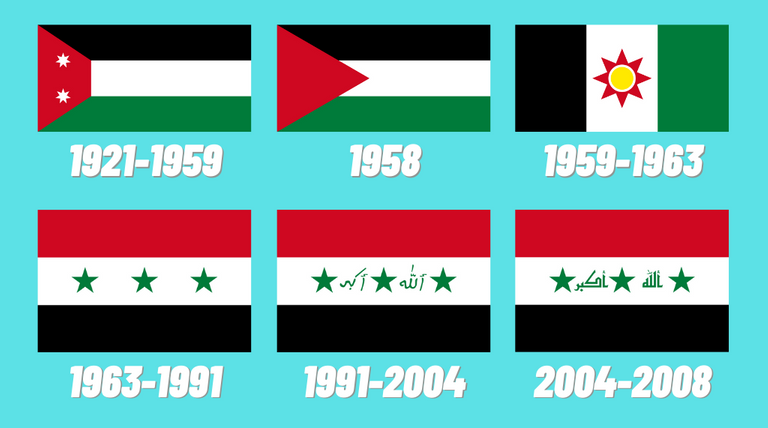
And that is all about the Pan-Arabic flags! Hope you learned something, and until next time!
Y eso es todo sobre las banderas panarábigas! Espero que hayas aprendido algo, y hasta la próxima!
Un contenido muy interesante, un tipazo y buena data.
Te mando saludos, querido Ácaro!